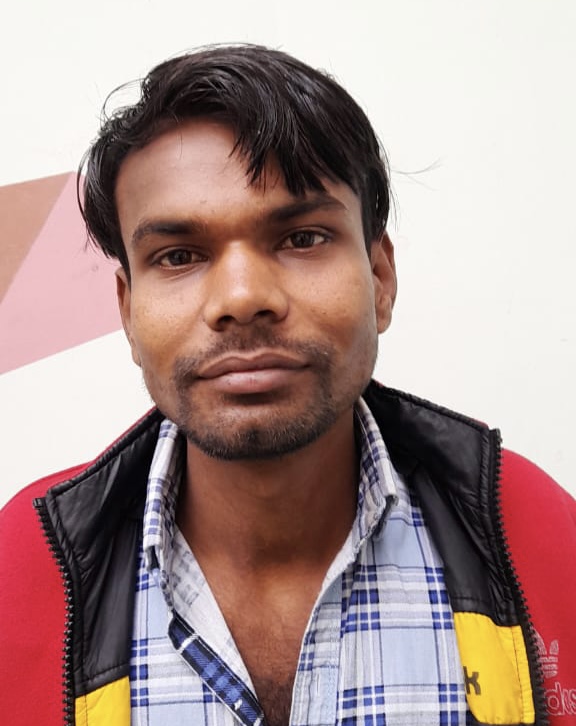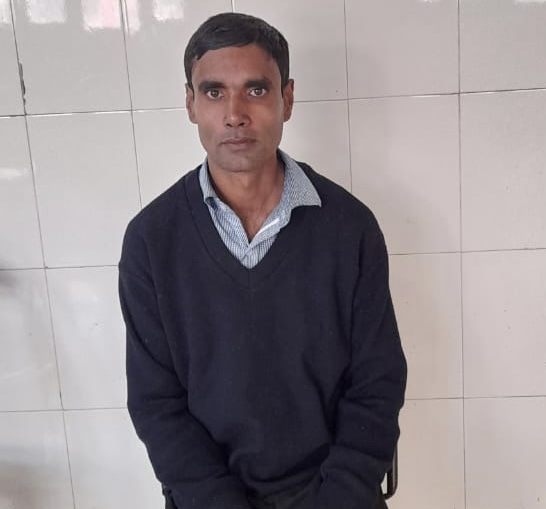Ramesh Singh, a 62-year-old labourer from the north Indian state of Haryana, still remembers his first night in Delhi. Eighteen years ago, he arrived in India’s capital city with the hope of landing a job. After a day of being turned down by over a dozen employers, he crashed on a footpath just minutes from the home ministry. He had just about closed his eyes when a cop roughly roused him, poking his baton on Singh’s exhausted face. “He frisked me as if I was a thief. He found Rs 17 ($0.23) on me, which he shamelessly pocketed,” Singh told VICE.
Advertisement
The cop proceeded to kick Singh off the footpath, barreling him down the road, a territory overrun by a pack of aggressive dogs. “The dogs then tore apart my clothes and nearly mauled me. I had to run away from them with all my might.”According to the latest available census data that dates back to 2011, Delhi has 46,724 homeless people – a gross underestimation according to organisations and activists working with homeless groups, who believe the number is actually around a million. Further analysis of the data revealed that Delhi is the homelessness capital of India. But being homeless is a broad term that only loosely categorises the many nuances of the problem. Shaunak Sen, a filmmaker whose 2015 documentary Cities of Sleep dealt with the subject, told VICE that the “homeless” in Delhi are actually unsheltered labourers.
Advertisement
“There are too many lazy connotations attached to the term,” he said. “In reality, most of them are either seasonal agriculturalists or migrant labourers from across the country. They usually congregate in the Old Delhi area.”In the documentary, we find daytime tea stalls doubling up as sleep shelters where the homeless pay the stall owners by the hour. In another part of Delhi, a bridge serves as a sleep shelter – exhausted labourers pay Rs 20 (around 27 cents) for two or three movies (depending on how long they want to sleep) screened in a makeshift house under the bridge. We see that watching the movies together and dozing off while they play is the only hopeful event of their days. Sen said that the bridge also serves as a place from which people want to jump off and die, and how it’s the homeless people living under it who often end up saving their lives. “Some people call such places as those governed by the ‘sleep mafia’ but these are just informal networks of shelter,” said Sen. “Sure, parts of this business might seem commercial but a lot of it has to do with a sense of community, too. One must understand that a government night shelter can barely accommodate 70 sleepers a night.”The “sleep mafia” is a loose term – and as Sen said, even a misnomer – to describe the network of men controlling who gets to sleep where, for how long, and how deep. These men take over pockets of the city, lending cots, quilts or blankets to homeless people for a small fee, and offering protection of their meagre belongings in return.
Advertisement
The ratio of beds in Delhi government night shelters to the number of homeless is highly lopsided. The city’s 296 shelters with over 9,000 beds are no match to the homeless multitude. Moreover, the condition of the existing shelters is poor, with broken walls, tattered beddings, and barely any sanitary facilities – further dehumanising those lucky enough to score a bed for the night.
Migrants and homeless people inside a shelter home, at Yamuna Sports Complex in New Delhi, India. Photo: Biplov Bhuyan/Hindustan Times via Getty Images.
While the bridge featured in Sen’s documentary is representative of the communal bond some outdoor sleepers share, the reality around other bridges is grim. Sanjay Kumar, whose Delhi-based non-profit Ashray Adhikar Abhiyan has been working with the homeless for over two decades, shared with VICE what he recently witnessed on a bridge near the Yamuna river that cuts through the city. “The sleepers there are entirely hidden from public view,” he said. “You will never notice them unless you actually dare to go under the bridge, inside its metallic skeleton. Most of them fall prey to addiction and die of starvation. Some even end up eating the rats scurrying around when they disturb their sleep or when they are hungry.”In Delhi’s brutal summers, the situation gets even more desperate. Kumar said that homeless people can often be seen precariously sleeping on traffic dividers because the breeze stirred by passing vehicles keeps both the heat and mosquitoes at bay.
Advertisement
But often, sleeping out here can be fatal. Sanjay Kushwaha, a 25-year-old mason, recounted how two of his friends lost their lives during one such summer night two years ago.

“This expensive BMW, with a drunk driver at the wheel, just rushed towards us,” Kushwaha told VICE. “They were clearly drunk on both alcohol and power. We had no time to make sense of the situation, and before we knew it, the car was on the divider and had run over two of my friends who were sleeping beside me.”During the monsoon, Kumar said that homeless people can often be seen taking shelter under trees all night. “They will either wrap themselves up with polythene bags or simply hug the trees and try to sleep.”
A homeless woman with her child sit under heavy rain at Rajiv Chowk on August 2, 2021 in New Delhi, India. Photo: Mohd Zakir/Hindustan Times via Getty Images.
In the bridge shown in Sen’s documentary, where the homeless prefer sleeping in the safe glow of the movies, the opening of a nearby dam’s gates floods their fragile world. Sleepers can be seen hurriedly carting away their quilts, mattresses and their few belongings to drier ground. In Delhi’s harsh winters, the homeless people are often the first casualty. In the winter of 2019, 331 homeless people died from the cold over a period of 45 days. The Delhi government’s newly launched “Winter Action Plan” that aims to provide night shelter for 9,000 people falls miserably short of the requirement, and glosses over the fact that summers – or any time of year – are just as perilous for the homeless.
Advertisement
“The idea that we suffer only during winters is a misplaced one,” said Neeraj Kumar, a 35-year-old rickshaw puller. “Last year, I was infected with malaria during the rains. It was so bad that I couldn’t even walk to the hospital. I just waited for my death, wrapped in a polythene bag that barely shielded me from the rain.”

For Nandi Anuragi, a 45-year-old construction labourer, the nights spent seeking shelter under trees or the awnings of establishments would be filled with nightmares, too. “There was this contractor who still hasn’t paid my dues of over Rs 37,000 ($500). For the longest time, my nightmares would simply be about him laughing. In addition to this, we’ve to also constantly be wary of pickpockets stealing whatever little we might have.”Harish Shetty, a psychiatrist who has worked with those rendered homeless after natural disasters, told VICE that panic and nightmares are all too common among homeless people. “Nutritional deficiencies also serve to aggravate the anxiety,” he said. “There is also a sense of resignation among them, which leads to ‘learned helplessness,’ a state that occurs after a person has experienced a stressful situation repeatedly. Abuse is normalised and living becomes a meaningless blur for them.”Bharat Vatwani, who was awarded the Ramon Magsaysay Award in 2018 for leading the rescue of thousands of mentally ill street paupers, also echoed the sentiment.
Advertisement
“During the early days of the rescue mission, we’d encountered a bearded, homeless schizophrenic person on the road who was lost in his thoughts and clearly sleep-deprived,” he told VICE. “All of a sudden, he bent down onto the gutter running by the side and scooped the dirty water with his cupped hands. He initially washed his face with it and then drank many scoops of the same slush and muck. It was a heart-wrenching sight.”With the pandemic requiring social distancing, Sanjay Kumar’s non-profit has had to cut the number of beds its shelter can offer. “According to the rules, the space between two beds should be a minimum of six feet,” he explained. “So, just half of our beds can be used now. Those who don’t get space in shelters often burn tyres and garbage to keep themselves warm during winter. They are then harassed by cops who accuse them of spreading pollution.”
A homeless person seen wrapped in a blanket on a cold winter morning at Nizamuddin, on December 14, 2020 in New Delhi, India. Photo: Amal KS/Hindustan Times via Getty Images.
The way Kumar sees it, women and transgender people without homes are “terribly vulnerable” and yet, he said, shelters meant to house women are decreasing by the day while there are no exclusive shelters for the trans community.“We see that some women have no option but to turn towards the sex trade,” he said. “Their husbands, if they have one, are always away working overtime.” The Delhi government implements various policies to save its citizens from the shocking air pollution that engulfs the city every winter – from shutting down schools to implementing staggered office hours. But it’s the homeless who continue to suffer. Many of them have developed acute respiratory disorders over the years due to their direct contact with the dusty, polluted roads of India’s capital. As Kushwaha puts it: “You come to Delhi because you want to fulfil your dreams. But for people like us, we won't be allowed to dream or breathe.”Follow Arman Khan on Instagram.